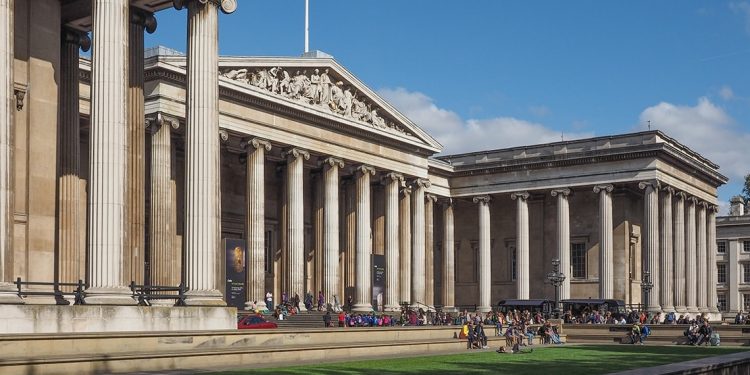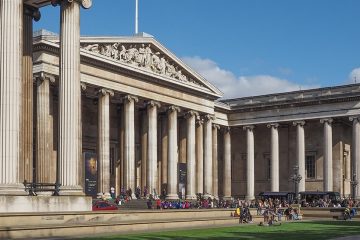
Experience Some of London’s Greatest Treasures for Free
When British writer Samuel Johnson commented, “When a man is tired of London he is tired of life” in the 18th century, London had its first museum with a collection spanning the globe. Johnson’s oft-repeated words ring even more true today — a time when Britain’s capital boasts more museums, galleries and public collections than any other city in the world.
If you visit London, your trip will be incomplete without checking out at least a few of the museums scattered throughout the city. In fact, London has so many museums that a visitor could spend all of a two week holiday perusing its major collections and still only scratch the surface.
There are London’s mainstays: The British Museum, The National Gallery and Tate — these and others would be an educational trip for kids. But there are also lesser-known collections: from the macabre (Clink Prison Museum) to the enigmatic (The Library and Museum of Freemasonry), from the eclectic (Sir John Soane’s Museum) to the cultured (Theatre Museum), from the scientific (Wellcome Trust) to the literary (British Library).
Fortunately, a perusal of London’s greatest treasures is no longer painful to the pocketbook, making London a more budget-friendly destination in Europe. In 2001 Britain’s national museums scrapped their entrance fees, as part of a government scheme to offer free access to all.
Whether you’re looking for essential things to do while on a layover in London, are vacationing there for a few weeks, or are a local, traveling back in time to explore history has never been more accessible.
Here are some must-see free museums, but be warned: each venue could suck away a day, just to get a cursory glance of these collections.
British Museum
London’s most popular is the British Museum, a mainstay in the Bloomsbury neighborhood since 1759. You’ll find sculptures that once adorned the Parthenon in Athens, the Rosetta Stone and a fantastic Egyptian collection with mummies.
Plus Roman artifacts and local finds such as “Pete” — a centuries-old man found preserved in a peat bog.
Don’t get too caught up seeing every item. If you spent one second gazing at each of the six million objects here it would still take 70 solid days to see everything.
But artifacts aren’t the only thing to spend your time looking at. The architecture of the building alone is enough to make your jaw drop. At its heart is the Great Court, a central marble courtyard with a spectacular glass roof that plunges like a vortex into a central hub, the Reading Room.
The National Gallery
For the art lover, two important galleries lay near Trafalgar Square. The first is the National Gallery.
The museum is a bastion of fine art where you can feast your eyes on everything from Botticelli and Gainsborough, to Turner and Van Gogh. The gallery houses temporary exhibits in the Salisbury wing which, although aren’t free, represent some of the finest works in the world. There’s a reason the National Gallery is one of the best museums in the world.
Camping with kids has its challenges, but it's incredibly rewarding for your kids and your family as a whole. These tips will help you enjoy your trip!
National Portrait Gallery
Around the corner is from the National Gallery in Trafalgar Square is the National Portrait Gallery, where a collection of portraits from medieval to modern times is housed. For those with a passion for English monarchy, don’t miss the upper floors where there are more images of kings and queens than in a Vegas casino.
Natural History Museum
A short tube ride away is South Kensington where stands the Natural History Museum, perhaps the most spectacular-looking museum in the country. Opened in 1881, this grand Victorian building is packed with everything pertaining to the natural world.
The massive collection is a result of the curiosity and globetrotting efforts of the English who sought to collect everything during Victorian times.
Here you’ll find fossils, stuffed animals (including the extinct Dodo bird and other endangered creatures), rocks and dinosaur bones among interactive displays that’ll bring out the kid in everyone. One of its greatest delights is the dinosaur section with its focal piece — a frightening Tyrannosaurus Rex.
Of particular interest is the Darwin Centre, which houses 22 million zoological specimens including those collected on Charles Darwin’s 1831 voyage to the Galapagos Islands.
An opposite wing of this expansive museum houses a fantastic interactive presentation on earth sciences, should you want to brush up on the planets, earthquakes and global warming.
Science Museum
A stone’s throw away from the Natural History Museum is the Science Museum and London’s IMAX. Another popular one for the kids, this venue offers plenty of interactive stuff and great displays, from steam engines to space capsules.
For those with a penchant for the medical, examine the science and art of medicine on the top floors. This display recounts the history of medicine, from stone-age witch doctors to nuclear medicine.
Don’t forget to see the shrunken heads in a display case on the fourth floor.
The sharing economy has rapidly changed the way we travel — making our lives easier and helping us connect more readily with people in distant places.
Victoria and Albert Museum
Across the street from the Science Museum is the Victoria and Albert Museum, which boasts the largest collection of Italian renaissance sculpture outside Italy, an impressive cache of Indian art, a dress collection, Asian art and whimsical medieval sculptures.
Museum of London
Across the city at the Barbican is the often-overlooked Museum of London. It’s a great venue focusing on the city’s history, from nearly 2,000 years ago when it was the Roman outpost of Londinium to the Great Fire of 1666 and beyond.
The museum stands on the archaeological ruins of Roman London — you can even spy the Roman wall outside the windows.
Tate Britain
A London museum crawl wouldn’t be complete without visiting Tate. For those who haven’t been to Britain since the 90’s, the original Tate is now Tate Britain, with a focus on British art from the 1500’s to today.
Wouldn’t it be great if there were a way to stay in amazing places all over the world for free? Here are some ideas for arranging free accommodation.
Tate Modern
Downstream on the Thames’ south bank stands the bold “Tate Modern” — a temple to modern art. (The best approach is over the new Millennium Bridge.)
Tate Modern has been converted from an old power station, providing a perfect gallery for those massive scrap-metal sculptures that divide those who see art from those who “just don’t get it.” Among today’s avant-garde artists who push the envelope of what is art lays modern classics by Andy Warhol and Dali.
There’s even Marcel Duchamp’s infamous porcelain urinal, The Fountain, unveiled by the French artist in 1917 to, as the Brits say, “mock the art world.”
